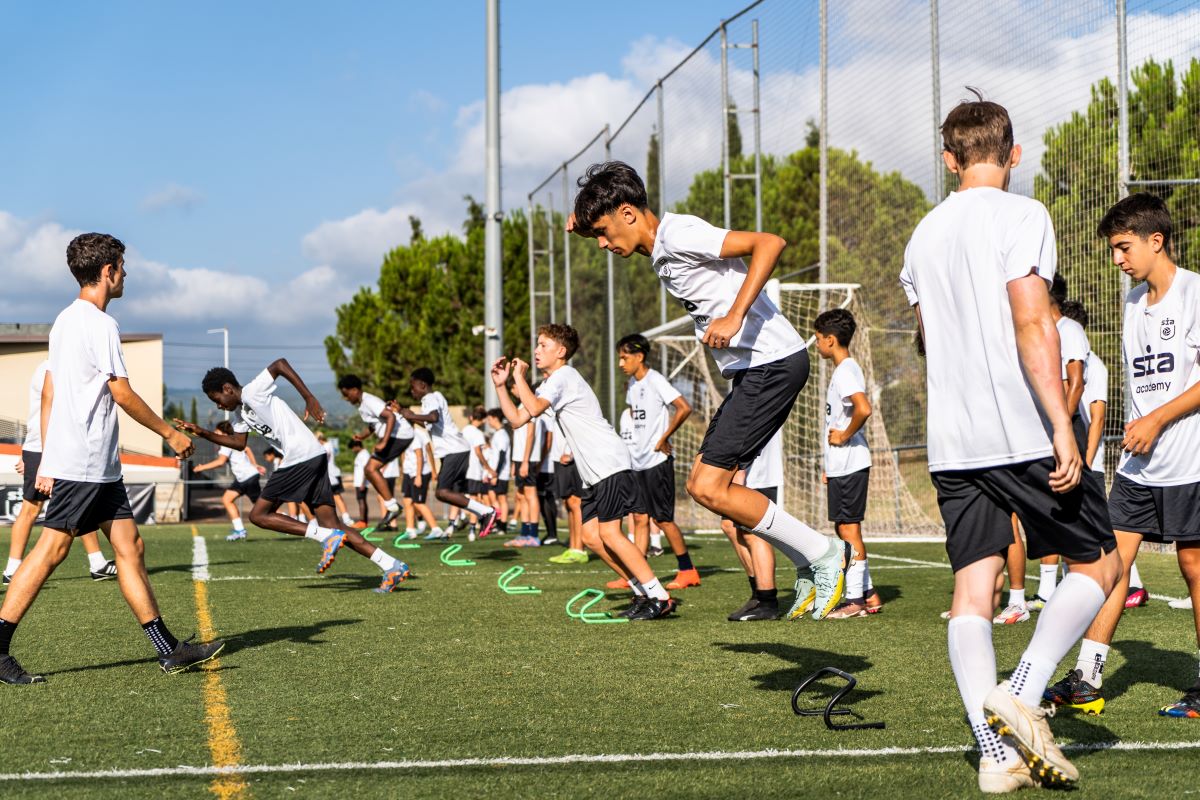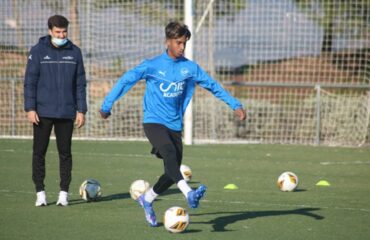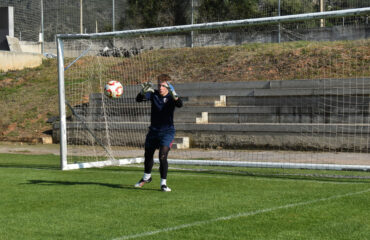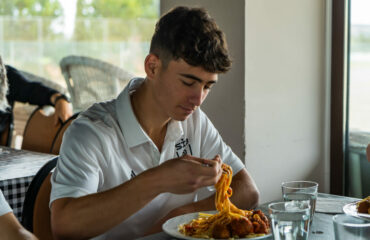With a degree in physical activity and sport sciences, a master’s degree in high performance and health, and already with four years of experience at SIA Academy, Ximo Blasco, our physical trainer, tells us a little about his day-to-day work at the Academy.
Although Ximo’s main objective is to enhance the players’ performance and minimize the risk of injury, there are many other important aspects to keep in mind, bearing in mind that at SIA Academy he works with young players of different ages and that many are still in the development stage.
What is his approach as a physical trainer at SIA Academy?
First, Ximo affirms that it is important to know their previous sporting context to be able to evaluate their physical condition: “To give a training of physical qualities from the moment they arrive, taking into account their state of form, where they come from, the methodology they were training and from there to evaluate each player to see how they are conditionally”.
Additionally, and after making this evaluation, it is important for the young athletes “to provide them with individualized training in order to optimize all their physical qualities and achieve maximum performance”. At this point, it is important to clarify that each player has different physical characteristics and that is why it is important to individualize as much as possible.
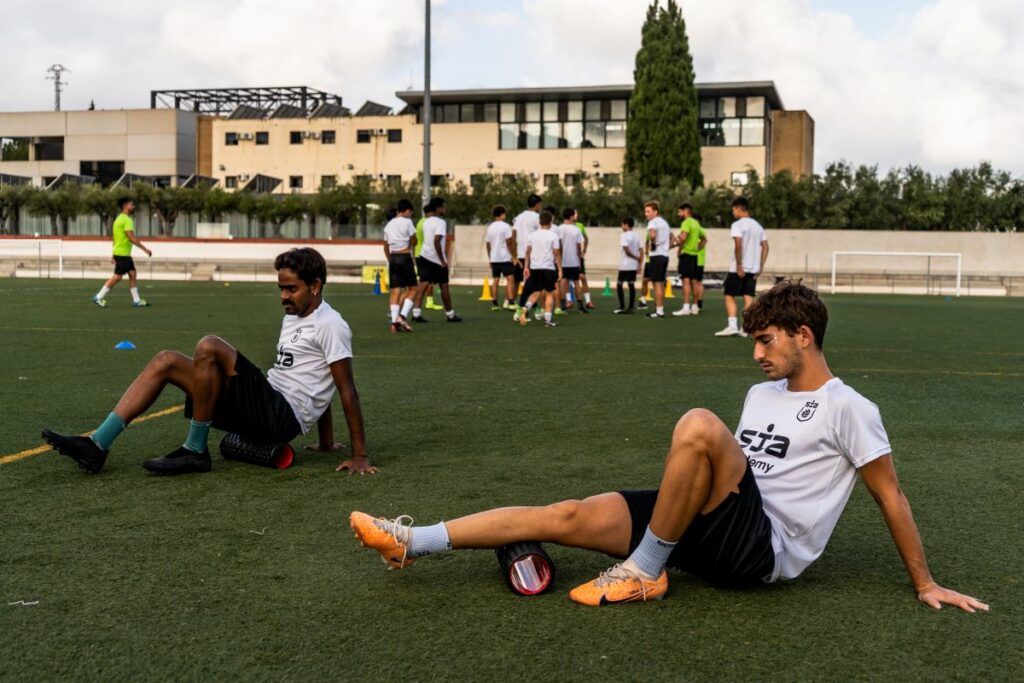
Why is good physical conditioning important for performance on the field?
Undoubtedly, a good physical conditioning will allow players to have a higher level of play when competing, as confirmed by our PF: “Football is a sport in continuous evolution, each time at a physical level requires more and it is very important that a player is prepared not only at a conditional level but also at an articular level”.
In this sense, Ximo considers this to be fundamental, because this way the Academy’s young players will be able to tolerate all the training loads that are demanded of them and be able to perform adequately without any injury that could harm their performance.
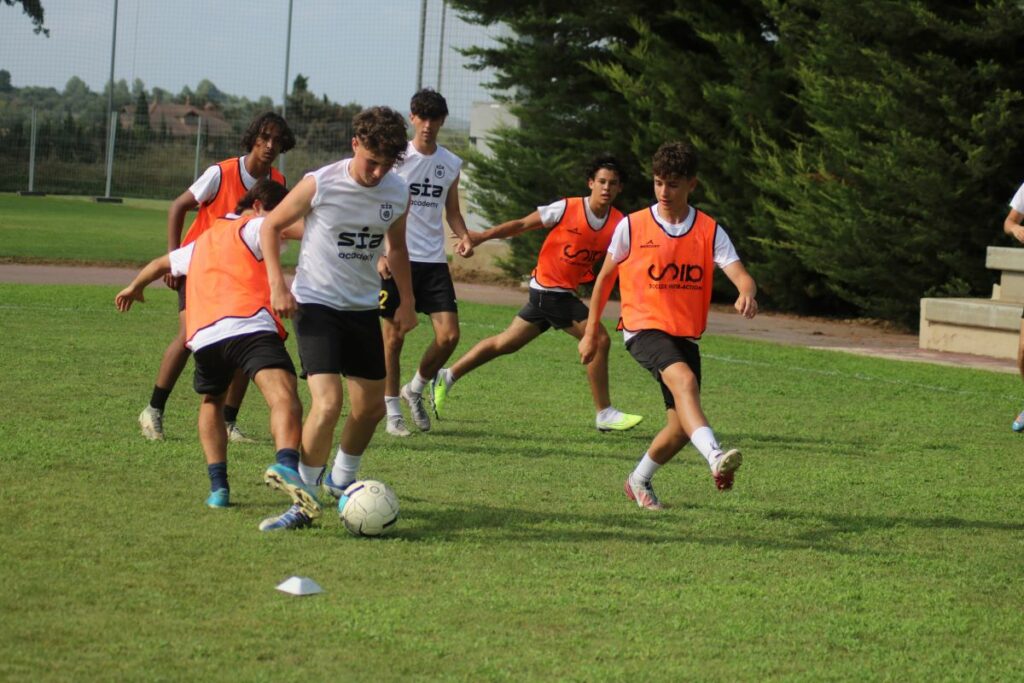
How do you deal with injuries at the SIA Academy?
It is important, from the moment the players arrive at the Academy, to carry out a detailed analysis of their condition: “When the players come in, we carry out a series of tests, physiological parameters and then both the physiotherapy department and my department coordinate to carry out some tests to evaluate the articular range, to see if they have the normalized or correct ranges for their anatomy”.
Subsequently, more tests are performed to determine the possibility of suffering injuries: “We also see how they are conditionally tested, to find out if they have strength deficits in the lower body because that can increase the risk of injury. After that, a series of functional and conditional evaluation tests are carried out to determine the injury profile of each player, where we explain to them the work they have to do before and after training sessions”.
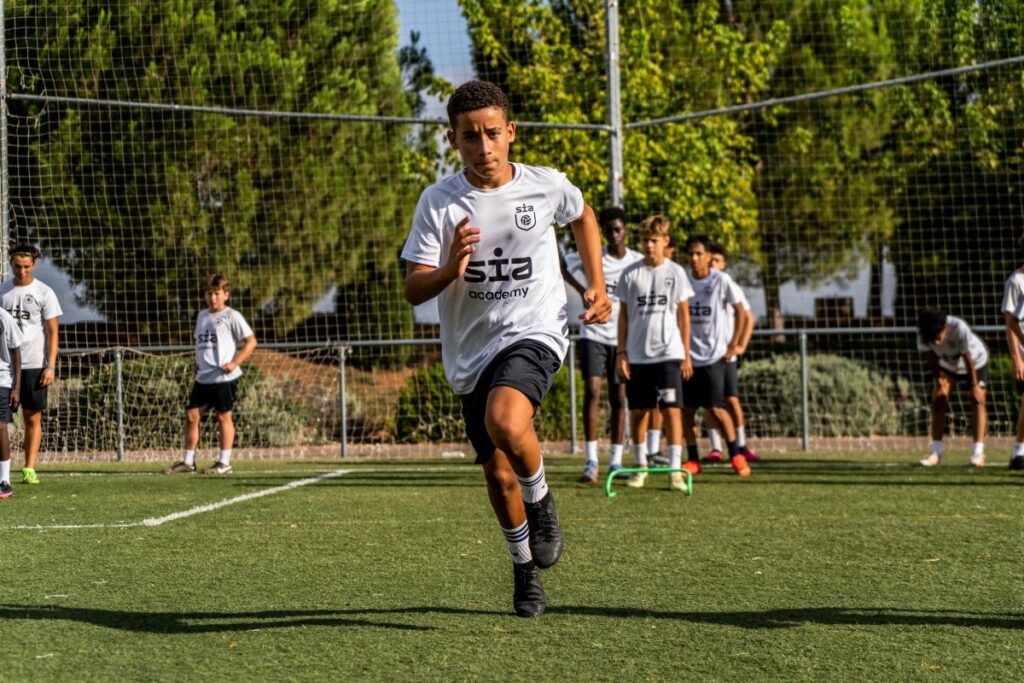
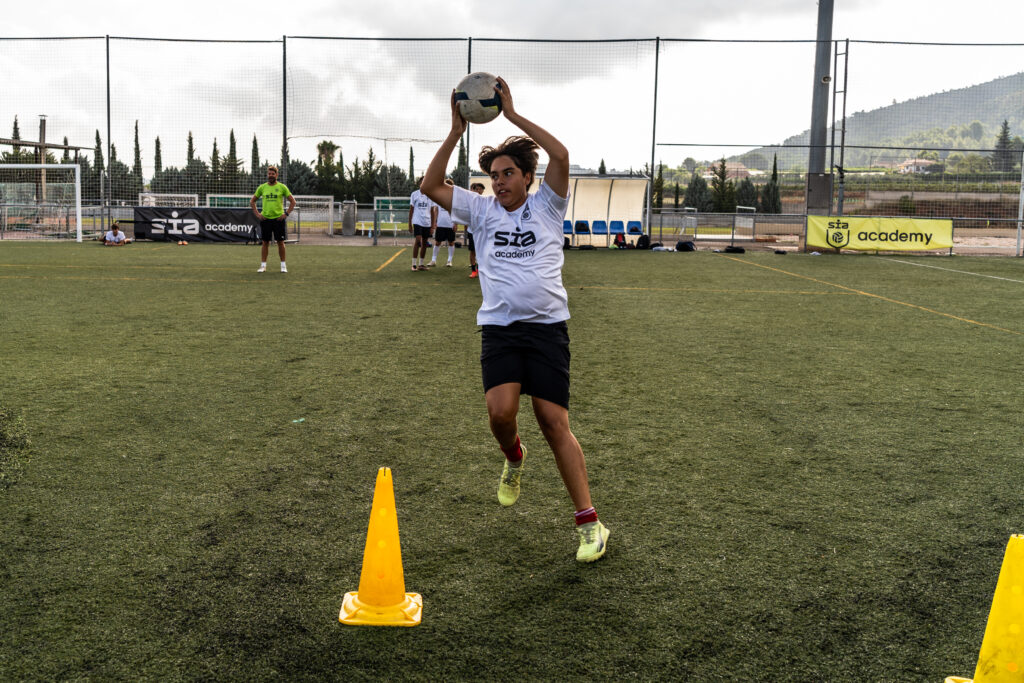
Does the SIA Academy work differently take into account the age of the players?
Ximo makes it clear at this point that the ages of the players are important to take into account the type of work they require in a particular way: “We take into account the maturity age, at a biological level“. Many players are 12, others 14 and others 16 and we have to take into account the peak growth rate.
“This is important because it allows us to control the training loads according to what each player needs at his age and his individual physical context: “We take into account these parameters to know how we can introduce the training loads because it is not the same for a player who is in the PVC where he will respond better to strength training than another player who maybe focuses on coordination skills, because he is not hormonally prepared to assimilate it”.

How do you know if a player is in optimal condition to play a game?
Regarding this, our physical trainer explains how they monitor the players: “We have a part within the conditional area where we control the load. Within that, the players have some diaries that are questionnaires where we indicate a series of parameters of how they sleep, how they are at a muscular level, how they are recovering.
In addition, not only the physical issue, but there are other factors that also influence the level of the young players: “All this tells us the state of the player and there are other variants such as the emotional state, how he has been sleeping and all this helps us to regulate the loads and see if the player is accepting or assimilating the loads he is having, how his peak form fluctuates because in the end we want him to be the best possible during all the matches he plays”.
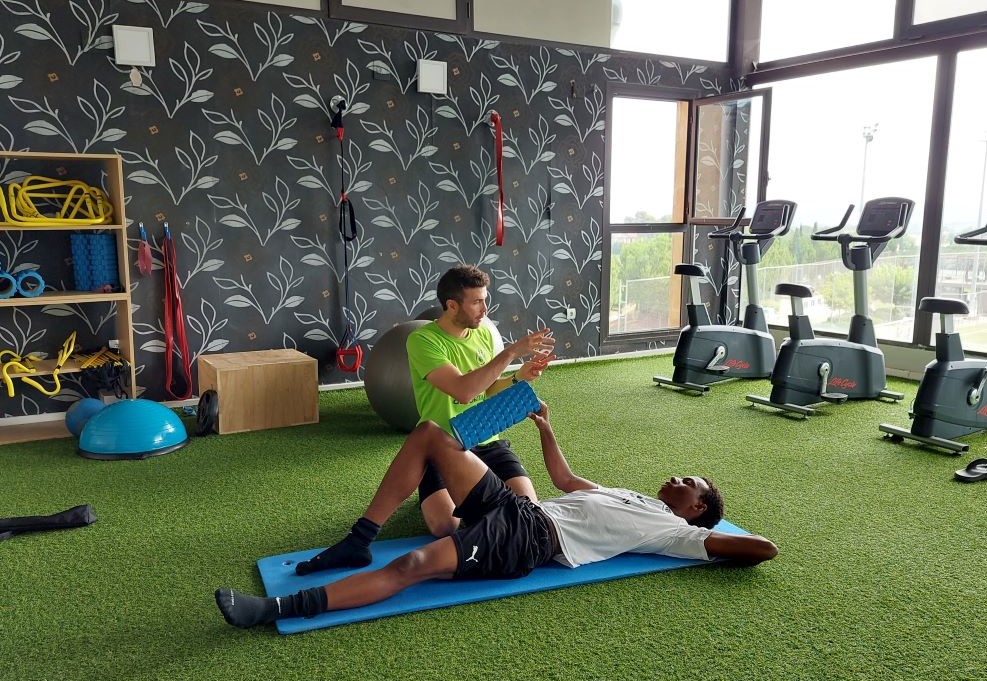
Ximo’s advice for young SIA Academy players in terms of physical preparation
Finally, our professional leaves some very valuable advice for athletes to follow: “What I recommend to all young players is to avoid following fads or advice from social networks. There is a huge variety of information and some of it is not adapted or contextualized for them. That they put themselves in the hands of professional and updated people in this case in soccer, there are many strengths training, you see out there that are not adapted to the context of soccer or the person and keep in mind that more is not better, better is better, and it is just as important to train as to rest”.
He also adds that in soccer it is very important not to over-train, and that rest is just as important: “Nowadays young people want to train, but just as you have to train, you have to rest, because if not, they do not recover well and are increasingly tired, more fatigued and that translates into poorer performance and an increase in injuries”.



